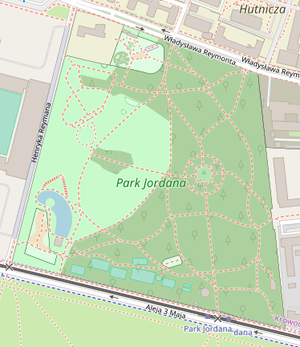User:Mateusz Konieczny/documentation of undocumented tags/what is a forest
Forested area tagging - next part in eternal cycle of "it is more complicated than expected"
how tree-covered area should be tagged
One class of tagging issues is "what should be used to tag a tree covered area? It is described in detail at https://wiki.openstreetmap.org/wiki/Forest
Interpretation of situation may depend on person, mine is that landuse=forest and natural=wood are synonymous typically used values for area conveyed by trees and landcover=trees is an additional synonym with the same meaning.
But the problem only starts here.
What counts as a tree-covered area?
There are differences caused by different vegetation typical for a given area:
Vegetation considered as a forest in one region, may be not classified as a forest in another. For example - in dry regions largest plants may be smaller than in regions with not so limited watery. There may be also other influences on what is considered as a tree. So vegetation may be considered as a forest in one place and beetroot as bushes in another. It is an interesting topic but I will leave it for someone else with more knowledge about the situation.
For start - is landuse=forest (or its synonym, natural=wood) really for any tree covered area? In Poland it is commonly used for any tree-covered areas in parks, residential areas etc, but there may be communities of local mappers attempting to create or keep some distinction between landuse=forest and natural=wood.
What about areas that have no mature trees and only just planted ones? In some cases saplings may be not higher than 20 cm? Is field of freshly planted saplings also a forest? To reduce workload on mappers it may be useful to map it as forest from start (after all, within ten-twenty years it will be probably clearly a forest), but what if someone wants more detail?
And what about tree plantation where always only young trees are present? What about burnt areas?
What about windthrow/blow down/destroyed by some forest areas?
In many cases forest regenerates quickly and it makes no sense to remap the same area multiple times for no significant gain.
But some forests are completely destroyed, with new trees growing very slowly and it may make sense to tag that.
In some only part of trees were destroyed.
clear-felling - sometimes trees are replanted (see tree plantation issues), sometimes it is initial part of permanent landuse change
This kind of detail is useful, for example typical tourism map would differentiate between grown forest and one that was just logged or burnt down.
failed definitions
Some popular ideas for defining forests that are not going to work
- plants growing over 5 m tall (impractical for survey on the ground, completely impossible while mapping from aerial images).
- defining forest by species of plant that grow there is also not going to work.
Specimen of the same species of plants growing in one location may be a tree and not a tree in a different location.
For example Pinus Mungo growing in high mountains is typically considered as bushes and tagged as natural=scrub as it looks like this: https://en.wikipedia.org/wiki/Pinus_mugo#/media/File:Custura_Bucurei.jpg
But plants from the same species may also grow as trees, see for example https://en.wikipedia.org/wiki/File:Pinus_mugo_uncinata_trees.jpg
real tagging
"If I make a ground survey and see newly planted trees or fast regenerating trees, then I’d map it as a forest."






